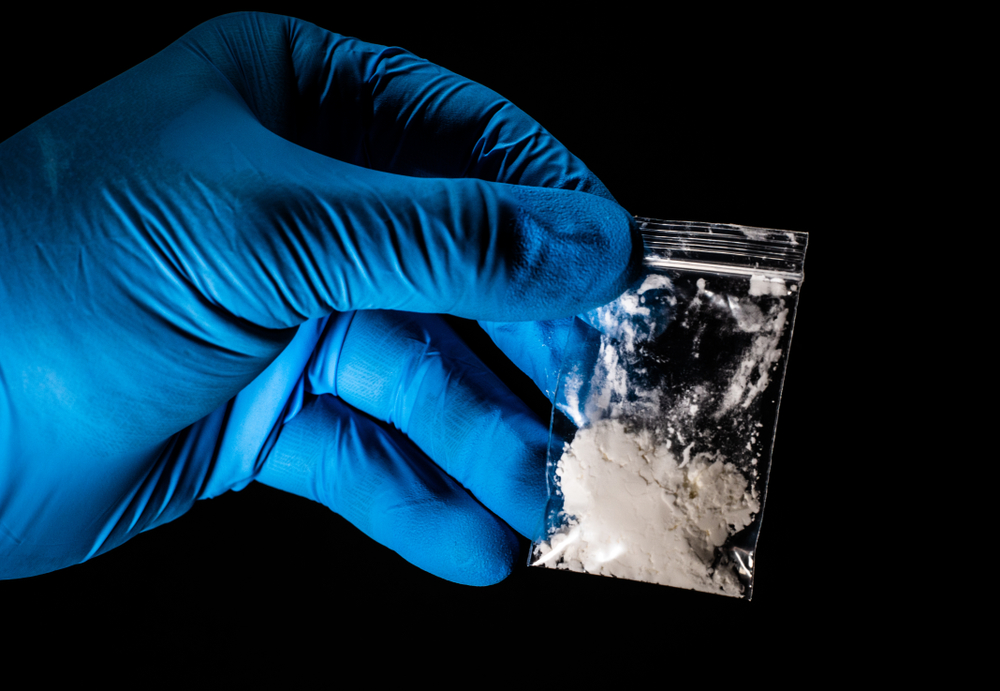Fentanyl overdoses are increasing throughout the United States at an alarming rate. A powerful and dangerous opioid, fentanyl is frequently used in hospitals and prescribed for pain management, but illegal variants are often mixed into other substances to make them more potent and inexpensive. Fentanyl can rapidly lead to an accidental overdose, so we’ll explain what exactly fentanyl is, how to recognize a fentanyl overdose, and what to do when someone needs help.
Yes, you can survive a fentanyl overdose but only if immediate medical attention is received. Due to its potency, a mere milligram can cause an overdose, and death could result in a matter of minutes.
What is Fentanyl?
Fentanyl is a synthetic opioid that is approximately 50 times more potent than heroin and up to 100 times more potent than the drug morphine. Doctors typically prescribe it to patients suffering from severe pain, whereas illegal vendors generate and distribute it.
The dangerous consequences of fentanyl are frequently related to illicitly manufactured fentanyl. Illegal fentanyl is frequently mixed with other substances such as cocaine, ecstasy, methamphetamine, and other opioids such as heroin, creating a dangerous cocktail. Because drug effects are dangerously combined with those of illicit substances, fentanyl may not be detected by those who consume it, and a significant number of the recent concerns associated with fentanyl is connected to illicitly manufactured fentanyl.
Can You Overdose on Fentanyl?
Yes, you can very easily overdose on fentanyl. A fentanyl overdose can occur if you take too much of the drug. According to the North Carolina Department of Health and Human Services, 2 milligrams (approximately the same as 5 grains of salt) of fentanyl can cause an overdose. When someone overdoses on fentanyl, their breathing may slow or stop. This lack of oxygen reaching the brain results in hypoxia, a condition characterized by a reduction in brain activity. Hypoxia may result in brain damage or death.
Can You Survive a Fentanyl Overdose?
Yes, an individual can survive a fentanyl overdose, but you must act quickly. Someone experiencing an opioid overdose can be saved by being administered naloxone immediately. Naloxone is an opioid antagonist that is administered through a nasal spray and immediately reverses the overdose. Naloxone is a drug that can save lives if administered in time. It sends a person into immediate opioid withdrawal, which typically requires treatment. It is also common for a person to re-enter fentanyl withdrawal once naloxone wears off. Because of this, anyone who overdoses should be provided with adequate medical care.
Fentanyl Overdose Risk Factors
If a person takes a fentanyl overdose without realizing it (for example, if fentanyl is mixed with other substances), they may be at increased risk for overdose because they are not accustomed to the opioid effects as strong as those of fentanyl. The quantity of fentanyl that causes overdose is determined by personal variables such as body weight, tolerance, and prior fentanyl use. Risk factors for fentanyl and other opioid overdoses include:
- Combining with other depressant substances such as alcohol or benzodiazepines
- Combining with other opioids
- Having a low tolerance
- Taking increasingly higher doses
- Having a history of overdose
Signs of Fentanyl Overdose
Fentanyl overdose is extremely dangerous. If you think someone has overdosed on fentanyl or any other drug, call 911 immediately, as this is a medical emergency. The signs of opioid overdose, including fentanyl overdose include:
- Respiratory depression
- Small pupils
- Pale or blue-tinted skin, nails, and lips
- Unconsciousness
- Limp extremities
- Slurred speech
- Vomiting
- Clammy skin
- Choking or gurgling sounds
What Happens During a Fentanyl Overdose?
A fentanyl overdose can disrupt brain chemistry to the point of resulting in confusion, agitation, and breathing difficulties, among other issues. Even if someone survives an overdose, it can cause long-term health issues such as faulty heart valves and brain injury as a result of an impaired central nervous system.
A person suffering from an overdose of fentanyl will first become drowsy. It will be difficult to rouse them. Their breathing will become shallow and slow, they might make snoring noises, and they may pass out. At this point, their body may become limp. Their face might appear clammy or pale, and their pulse might be slow or weak. Their fingertips and lips might turn blue if they have a light complexion. The inside of their lips might turn purple or blue if they have dark skin.
What to Do in the Event of a Fentanyl Overdose
It may be difficult to establish which substance leads to an overdose, as heroin, cocaine, methamphetamine, and MDMA are frequently combined with fentanyl. Naloxone is an opioid antagonist that is immediately administered to patients with fentanyl overdoses. This substance binds to opioid receptors immediately and blocks the effects of opioid drugs. However, fentanyl may require multiple doses of naloxone because it is more powerful than other opioids such as morphine.
It’s vital that you call 911 if you think someone has overdosed. If the individual has overdosed on an opioid, medical personnel can administer naloxone if they arrive. Naloxone is available in both injectable and nasal spray formulas. After the naloxone dose is administered, the patient should be monitored for another two hours to ensure that their breathing does not slow down or stop. Naloxone may be purchased without a prescription in some states. If they see someone overdosing on fentanyl or other opioids, family, friends, and community members can use naloxone if they have received naloxone in a nasal spray.
After a Fentanyl Overdose
The emergency personnel who arrives at the scene of a fentanyl overdose may need to manage the airway of someone who is not breathing. Endotracheal intubation, which connects a breathing tube to the windpipe through the nose or mouth, may be accomplished in a time of emergency to safeguard the airway and support mechanical ventilation, if necessary. If a fentanyl overdose victim is brought to the emergency department, medical professionals may need to take blood samples and provide supportive care.
A person who has overdosed may be hospitalized until he or she is stable and breathing normally again. Medical personnel may assist patients in starting long-term opioid treatment for substance use disorder and in transitioning to further rehabilitation and recovery.
Fentanyl Overdose in the United States
Within the United States, synthetic opioid overdoses, including illicitly manufactured fentanyl and fentanyl analogs (similar chemical structures), have increased significantly. More than 56,000 people died from synthetic opioid overdoses in 2020. Fentanyl and fentanyl analogs appear to be the key drivers of opioid overdoses, as well as overdoses involving other drugs such as cocaine and methamphetamine. Opioid overdoses, mainly caused by fentanyl, are killing 150 persons daily in the United States.
Fentanyl Addiction Treatment
The use of opioid agonist treatment (e.g., buprenorphine or methadone) is often the initial step in treating opioid addiction. If a person undergoes medically supervised withdrawal and then discontinues without further care, he or she is more likely to return to opioid abuse and may experience an opioid overdose or relapse. In addition to pharmacological support, opioid use disorder treatment options include behavioral therapies and other psychosocial supports found in rehabilitation programs.
Fentanyl treatment centers can assist you in overcoming a fentanyl addiction and dealing with fentanyl withdrawal. Addiction treatment centers can provide you with the information you need about fentanyl, help you understand fentanyl addiction, and help you cope when fentanyl dependence takes hold. Fentanyl addiction is a severe problem that should be treated immediately. There are a variety of treatment options, such as medication-assisted treatment, dual diagnosis treatment, aftercare, and relapse prevention. With the proper treatment, a cure is possible.
Partial Hospitalization Program (PHP)
The PHP approach to substance use disorder rehabilitation is an intensive method of rehabilitation. Patients who are treated in a PHP do not live at the rehab facility; they attend treatment during the day and return home at night. Individuals also undergo group and individual therapy as well as other therapies to promote healing and sobriety as part of fentanyl addiction treatment. After a partial hospitalization program, clients are typically encouraged to transition to a less intensive outpatient program. This allows them to continue to receive assistance at a less-intensive level.
Intensive Outpatient Program
Fentanyl addiction can be treated as an outpatient service while utilizing medication-assisted treatment and behavioral therapy. Behavioral therapy helps people learn how to deal with stress, cravings, and triggers. It can also help people develop healthy coping strategies and deal with difficult situations without using fentanyl. Therapy is available in a wide range of lengths, but is usually provided over several months. Behavioral therapy assists individuals in developing healthy coping skills, identifying the source of addiction, and applying things learned in therapy into their everyday lives.
Dual Diagnosis
A person may have both a substance use disorder and a mental health condition if they are addicted to fentanyl. Recovering individuals frequently struggle with substance abuse and mental health issues simultaneously. Dual diagnosis treatment is the treatment of substance abuse and mental health issues at the same time. This treatment includes medication-assisted treatment, behavioral therapy, counseling, and support groups
Aftercare
Those in recovery from fentanyl addiction will need aftercare and relapse prevention services to stay sober. Aftercare may consist of therapy, twelve-step meetings, and sponsors. Relapse prevention services can assist individuals in identifying triggers and strategies for avoiding a relapse. Individuals who are recovering from fentanyl addiction are often vulnerable to relapse, therefore, you can prevent fentanyl abuse by creating a relapse prevention plan. Fentanyl addicts frequently have other addictions such as benzodiazepines, opioids, and cocaine in addition to fentanyl. As a result, fentanyl addicts must be treated for all of their addictions at the same time. It is critical to get fentanyl addiction treatment at a professional drug rehab facility if you are a fentanyl addict.
Fentanyl Addiction Treatment in Asheville, NC
In summary, it is all too easy to experience a fentanyl overdose. If you or a loved one is struggling with a fentanyl addiction, the professionals at Asheville Recovery Center can help.
At Asheville Recovery Center, we offer a wide range of treatments to assist those struggling with drug or alcohol addiction. If you or a loved one is battling substance or alcohol addiction, we can assist you. We utilize a multidisciplinary approach in our treatment programs. You may receive inpatient, outpatient, detox referral, and aftercare services at our clinic. To receive assistance with drug or alcohol addiction, please contact one of our addiction specialists today. You don’t have to struggle on your own.











